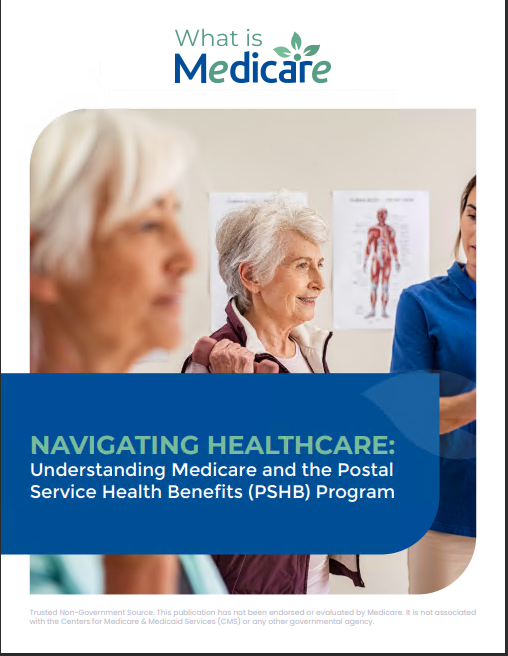Key Takeaways
- Medicare is divided into four parts—A, B, C, and D—each covering specific health services and costs, providing flexibility based on your health needs.
- Understanding how Medicare parts work together can help you choose the right combination for comprehensive coverage and better financial planning.
Medicare Parts A, B, C, and D: What Each One Means for Your Health and Your Wallet
Navigating Medicare can feel overwhelming, but understanding the basics of each part can empower you to make informed decisions about your healthcare and financial future. Medicare is designed to cover a range of health services, but each part serves a distinct role. I’ll break down each component—Parts A, B, C, and D—so you can clearly see what they mean for your health and wallet.
What Does Medicare Part A Cover?
Medicare Part A is known as hospital insurance. If you’re concerned about the costs associated with hospital visits, surgeries, or other inpatient services, this is the part of Medicare that will come into play. Part A primarily covers:
- Inpatient hospital care
- Skilled nursing facility care (short-term)
- Hospice care
- Limited home healthcare
This part is usually premium-free if you or your spouse have paid Medicare taxes while working. However, it’s important to be aware of the deductible and coinsurance fees that apply when you use these services. For instance, if you’re admitted to a hospital, you’ll have to meet a deductible before Medicare starts covering the costs. Then, depending on the length of your stay, coinsurance fees may apply.
Why Is Medicare Part A Important?
Part A forms the foundation of your Medicare coverage, helping to reduce the financial burden of hospitalization and related services. If you plan for this part effectively, it can save you substantial costs, especially during unexpected hospital visits. Ensuring you qualify for premium-free Part A could mean one less financial concern as you age.
How Does Medicare Part B Help You?
Medicare Part B covers outpatient care, and it’s what you turn to for services outside of hospital stays. This is also known as medical insurance and includes:
- Doctor visits
- Outpatient services
- Preventive services (e.g., flu shots, screenings)
- Diagnostic tests (like X-rays)
- Durable medical equipment (e.g., walkers, wheelchairs)
Unlike Part A, most people must pay a monthly premium for Part B. The cost varies depending on your income, but the coverage provides valuable benefits that help manage day-to-day health needs and preventive care. There’s also an annual deductible, and once you meet it, Medicare usually covers 80% of approved services, while you pay the remaining 20%.
Is Medicare Part B Right for Me?
Part B is essential for those who want broader coverage that includes doctor visits and preventive care. It helps ensure that you have access to routine and emergency medical services without facing high out-of-pocket expenses. By taking advantage of the preventive services covered under Part B, you can stay proactive about your health, catching issues early before they become major concerns.
Exploring Medicare Part C: What Makes It Different?
Medicare Part C, often called Medicare Advantage, offers an alternative way to receive your Medicare benefits. Instead of traditional Medicare (Parts A and B), Medicare Advantage plans are offered through private companies approved by Medicare. These plans must provide at least the same benefits as Parts A and B, but they often bundle in additional services, such as:
- Vision and dental coverage
- Wellness programs
- Hearing aids
- Prescription drug coverage (often included in Part C plans)
Medicare Part C requires a premium, and the costs and benefits vary by plan and provider. It’s a choice for those who prefer a more all-in-one approach to their healthcare, combining multiple benefits into a single plan. However, it’s crucial to understand that these plans usually come with network restrictions, meaning you may need to use specific doctors or hospitals.
Is Medicare Advantage Right for You?
Medicare Advantage might be a good fit if you like the idea of having extra services bundled together. It can simplify managing your healthcare by bringing everything under one plan. However, keep in mind that because Part C plans are offered by private companies, they may have network restrictions, which could limit your choice of healthcare providers.
Medicare Part D: How Does Prescription Drug Coverage Work?
Medicare Part D focuses on prescription drug coverage. If you rely on medications for managing chronic conditions or other health needs, this part of Medicare is crucial. Part D plans are offered through private insurance companies, and they work alongside Original Medicare (Parts A and B) or can be included in Medicare Advantage plans.
Each Part D plan has its own list of covered drugs (formulary), so it’s important to choose a plan that covers the medications you take. The costs associated with Part D include:
- Monthly premiums
- Annual deductibles
- Copayments or coinsurance for prescriptions
Medicare Part D plans also feature the “coverage gap” (commonly known as the “donut hole”). This is when your prescription drug costs reach a certain limit, and your share of costs temporarily increases. However, once you spend enough out-of-pocket, catastrophic coverage kicks in, reducing your costs again.
Do I Need Medicare Part D?
If you regularly take prescription medications, Part D can be a vital part of your Medicare coverage. Without it, you could face high out-of-pocket costs for drugs. Reviewing and comparing different Part D plans is essential to find the one that fits your medication needs and financial situation.
How Do These Medicare Parts Work Together?
Choosing the right combination of Medicare parts can seem complicated, but knowing how they work together makes it easier to create a comprehensive health plan. Here’s how the pieces fit:
- Original Medicare (Parts A and B): This provides the foundation, covering inpatient and outpatient services.
- Medicare Advantage (Part C): You might choose this if you want an all-in-one plan that combines Parts A, B, and D, plus extra services like dental or vision.
- Medicare Part D: If you prefer to stick with Original Medicare, you can add Part D separately for prescription drug coverage.
Should You Combine Different Parts?
Whether you decide to go with Original Medicare or opt for Medicare Advantage, understanding each part allows you to build the coverage that best fits your health and financial needs. Medicare gives you flexibility, but it also requires careful planning to ensure you get the services you need without overpaying.
Tips for Navigating Your Medicare Options
- Evaluate Your Health Needs: Review your health history and consider what types of services you’re likely to need. This will help you decide whether to stick with Original Medicare or explore Medicare Advantage.
- Understand the Costs: While Medicare helps reduce healthcare expenses, it isn’t free. Make sure to account for premiums, deductibles, and coinsurance when budgeting for healthcare costs in retirement.
- Review Annually: Your health needs and Medicare plans may change, so review your coverage options yearly during open enrollment. This ensures you get the most appropriate and cost-effective plan each year.
Taking Control of Your Medicare Decisions
Medicare offers various options to fit different health needs and financial situations. Whether you choose Original Medicare with a separate Part D plan or prefer the all-in-one convenience of Medicare Advantage, understanding how each part works empowers you to make the right choices. It’s all about tailoring your Medicare plan to balance your health requirements with your budget.
Exploring the Best Path for Your Health Coverage
As you navigate your Medicare journey, make sure to consider all aspects of each part. Take the time to review your choices and consult with licensed insurance agents for detailed information that fits your situation. Planning now ensures that you have the right balance of healthcare coverage and cost management in your golden years.










